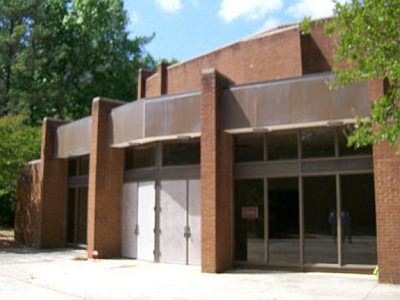
Renovating Brook Run Theater would cost approximately $7.5 million and fit easily into the city of Dunwoody’s comprehensive plan, according to a new feasibility study from The Brook Run Conservancy.
“I am pleased to let you know that we are now certain that Dunwoody has a need for this facility and that there is significant support in the community for that need,” states Conservancy President Danny Ross in a Jan. 15 letter to the council.
The cost to construct a new theater at about the same size would cost $24.5 million, the feasibility study states.
The conservancy sent its 136-page feasibility study to City Council members recently and the issue is expected to come up at a town hall meeting on Jan. 21 and at the council’s Jan. 25 meeting.
While Ross argues that there is support for renovating Brook Run Theater, he may still face an uphill battle from the council. In June, the city’s engineers did not favor renovation of the building because of the wear and tear it has endured since it was shuttered in the 1990s. Clearing out asbestos in the building, for example, would cost $14,500.
Ross went before the city council in March to ask for help in funding a $40,000 feasibility study to restore Brook Run Theater and said then there was strong support to do so.
Theater Design Solutions, hired by the Conservancy to review options for the Brook Run Theater, states in its analysis that “The positive aspects of the existing location seem to outweigh the benefits of building a new theater in another location.”
Ross also states in his letter that the restoration of the historic Brook Run Theater “supports many of the long-range community goals specified in the Dunwoody Comprehensive Plan including: growing the arts as part of what makes Dunwoody special; committing to maximizing resources through incentives and grants, especially targeting opportunities to promote unique development, such as adoptive use of buildings with historic value; creating and maintaining programs to support historic preservation and/or campaigning for grant dollars that award preservation dollars; and, supporting the arts and opportunities for cultural activities and events.”
History of the theater from the study:
Brook Run, a hospital, school and home for the mentally challenged (The Georgia Retardation Center, was established by the State of Georgia in 1966. The campus of the facility had 17 buildings on the site with roads and associated parking areas, sidewalks, landscaping and utilities. The buildings occupied 463,000 square feet, consisting of dormitories, hospitals, administration building, theater, chapel, sports facilities, a greenhouse and a country store. It was a freestanding community within the community of Dunwoody. In 1997, the Joint Commission for the Accreditation of Health Care Organizations judged Brook Run to be in the top 1 percent of 11,000 facilities nationally. Yet, a year later in 1998, as a result of the 1990 Americans with Disabilities Act (ADA), the facility was forced to close. An important chapter in the history of Dunwoody and of those who once called Brook Run home closed forever.
The last remaining major building at Brook Run is the historic multi-purpose Brook Run Theater, which was constructed in February 1966 to serve as the town center (gathering place) for the residents of the mental health facility. The architectural firm of Jones and Associates of Augusta, Ga., designed the theater. Originally constructed for the disabled residents of Brook Run, the theater accommodated only 200 seats, giving ample room for wheelchairs and even beds … The stained glass windows in the chapel portion of the building were handmade by the Trappist Monks at the Monastery of the Holy Spirit in Conyers, Ga. People involved with the theater’s early days say that the stained glass work was commissioned and donated by the John F. Kennedy family.
The study also reported:
- The theater would be redesigned to accommodate 350 seats. There is adequate parking with more than 400 spaces available within one block of the theater location; only 120 parking spaces are needed to meet city code for a facility this size, according to the feasibility study.
- The conservancy is ready to launch a major capital campaign and seek funding through individuals, corporations, foundations, park bonds, historic preservation tax credits and grants.
- The conservancy is hoping a portion of the $4 million the city received from the DeKalb County Bond Referendum would go toward renovating Brook Run Theatre. “Directing a portion of these funds will not diminish funds available from our $25 million budget for other infrastructure needs,” Ross said in his letter to the council.

The 7.5 million dollar option, is the option with used theater seats (maybe Braves stadium seats). There are two other options if you read the study. If you want really nice seats, that is the 18.5 million dollar option. The true failure in this feasibility study is that it has no data to justify its claims. Usually in a study like this you would have data showing information on why it is feasible. This is just a 136 page opinion piece. I’m in shock the report didn’t say that the theater couldn’t be a good home for the Georgia Music Hall of Fame.
Call in the wrecking ball.
Ditto Hemi. If everyone would start asking REAL questions about the REAL numbers, this idea would be laughed out of town. Thank God we have people on Council who know the REAL numbers of the cost of this boondoggle.
What is “historic” about this building?
Hi, Jim. Important to know! That is now included in the story. Thanks for reading.